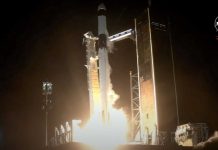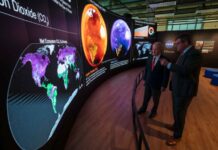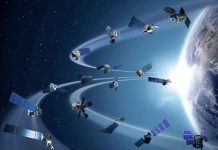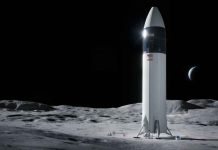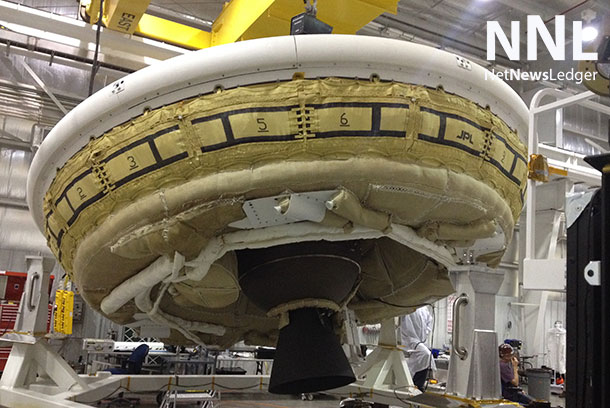

Image Credit: NASA/JPL-Caltech
HOUSTON – TECHNOLOGY – NASA’s Low-Density Supersonic Decelerator (LDSD) project plans to fly its rocket-powered, saucer-shaped landing technology test vehicle into near-space from the U.S. Navy’s Pacific Missile Range Facility (PMRF) on Kauai, Hawaii later this week.
NASA has identified five potential launch dates for the high-altitude balloon carrying the LDSD experiment: June 28, 29, 30, July 1 and 3. The launch window for Saturday, June 28 extends from 8:15–9:30 a.m. Hawaii Standard Time (2:15-3:30 p.m. EDT).
The test will be carried live via UStream and simulcast on NASA Television.
The vehicle originally was scheduled for its first test flight earlier in June, but unacceptable weather conditions prevented the launch.
On launch attempt days, journalists are invited to PMRF to watch the liftoff and flight. Journalists who did not previously acquire base clearance but would like to attend the event must arrange access in advance by contacting the U.S. Navy’s Pacific Missile Range Facility PAO, Stefan Alford, at 808-482-0036 or stefan.alford@navy.mil by 11 a.m. Hawaii Standard Time on Thursday, June 26. Valid media credentials are required.
Reporters who have previously received access clearance from the U.S. Navy for the LDSD launch also are invited to return, but must contact Alford by 11 a.m. on Friday, June 27, to have their access to the facility reactivated.
Reporters must arrive at the PMRF main gate, each balloon launch attempt day, no later than 7 a.m. for escort onto the base. Journalists should follow the LDSD mission website for daily launch window dates and times. Reporters will be escorted off the base following the balloon launch.
Decisions to attempt launch of the LDSD test will be made the day before each launch opportunity date.

